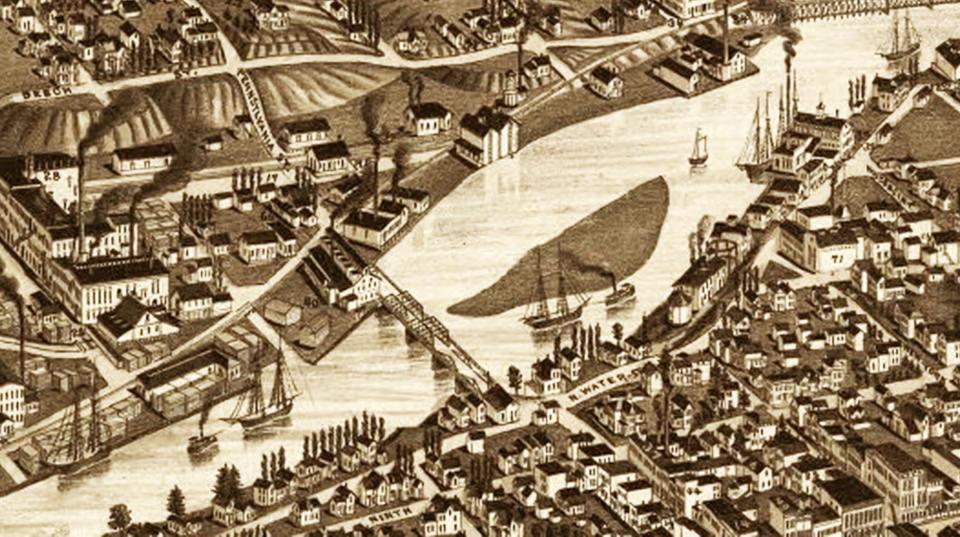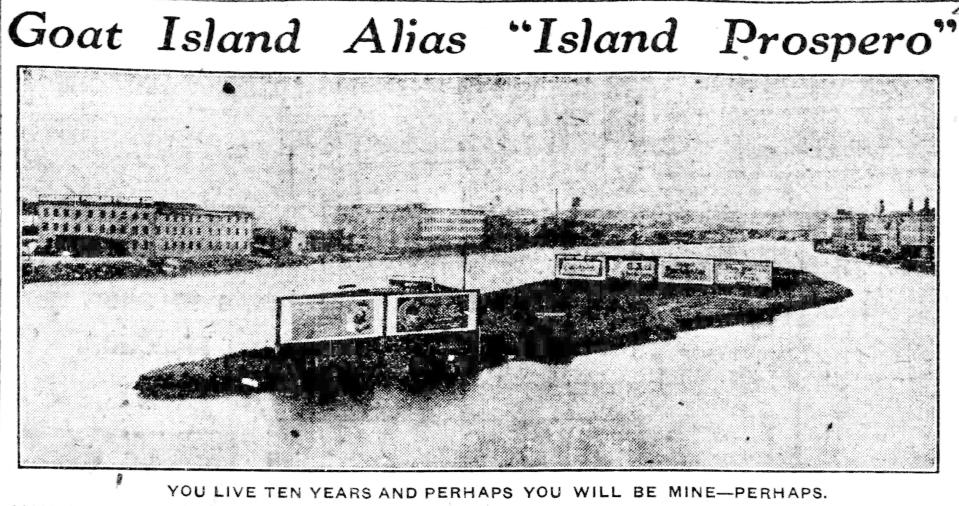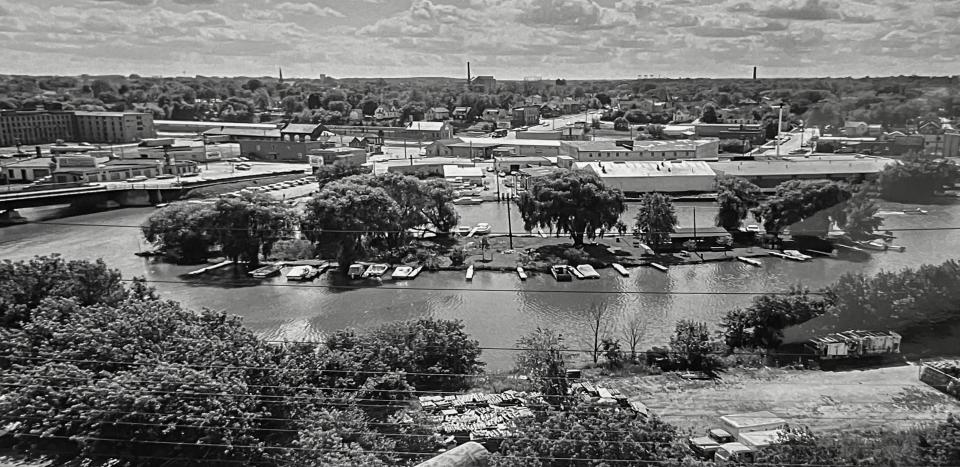What's in a name? Sheboygan's Boat Island was once a summer home for hungry goats
SHEBOYGAN - A long slender island on the Sheboygan River near today's Pennsylvania Avenue Bridge was noted on the city maps as early as 1832, and has seen many different uses and names during the last 192 years.
Originally known as Melon Island, the land mass on the river is best known as Goat Island.

It got that name because Charles Bosshardt and his son Carl in 1905 ferried their goats to the island on flatboats leaving the animals there all summer to graze on the marsh grass. The grass, considered a health food, helped create goat's milk, which was sold to doctors and hospitals.
In 1926, the Press announced a shipyard unofficially called The Goat Island Shipbuilding Company announced that it would provide service for general ship repairs and building small boats. The company was operated by Peter and Arthur Peterson along with Theodore Flentje.
The island, however, had a somewhat controversial ownership saga through the years in both private and public hands.
In 1916, Thomas Lynch, of Sheboygan and Frank Denison of Mellen, Wisconsin, claimed ownership via a quitclaim deed.
According to a 1982 Press article, Denison approached Wilma Robinson, a stenographer for Judge Otto Bassuener, and asked her to sign a quit claim deed. Although she never pretended to own the island, Miss Robinson consulted with the judge and then signed, the stories said.
It was no longer Goat Island, as Lynch and Denison renamed it Island Prospero.
Lynch and Denison claimed to own all four Sheboygan River islands in the city: Island Prospero (Goat Island), Isle Woodrow, Isle Speck and Isle Tryst.
According to Investopedia, a key function of a quitclaim deed releases a person’s interest in a property without stating the nature of the person’s interest or rights, and with no warranties of that person’s interest or rights in the property.
The city kept a closed eye to the development until 1925 when litter and distracting billboards belted out "loud" ads angering many in the city.
According to a June 5, 1925, Sheboygan Press article, Mayor L.E. Larson said to the board of public works, "It is my belief as well as the announced consensus of public opinion that the islands should be the property of the city, especially in view of the fact that one of these islands, commonly known as Goat Island, located near Pennsylvania Avenue bridge has become an eye-sore to that vicinity of the city."

The city negotiated with the "owners" of the islands who dropped their claim to the parcels. Ironically the city took possession via quitclaim deed.
According to a Press article by Jan Hildebrand, under the chairmanship of Dr. W.G. Hollinsworth, the island was cleaned up with the planting of shrubbery, grass and trees. Periodic flooding took its toll on the island, leaving it covered with brush and debris of high water.
RELATED - Sheboygan was thought to have Sundown laws on the books
In 1957, the city began leasing Goat Island to the Sheboygan Outboard Club for a $1 a year plus the promise to clean it up. The island was renamed Boat Island.
Things went along well until 1982 when it was discovered that the Bureau of Land Management identified the island as federal property. The agency said it identified lands that should be assigned to more appropriate government agencies at the time. Apparently both the city and the federal government at the time both believe they owned the islands.

City officials were urged to contact the BLM office to get the situation resolved. Eventually it was.
In 1988, the Outboard Club bought 800 feet of river frontage to develop a camping marina. Due to flooding issues on the island, the club also decided to build a clubhouse on the shoreline.
Boat Island is still in use by the club for mooring and picnic areas with facilities at the shore building and docking marina complex.
View a VR panoramic photo of the island on your desktop computer: Click here.
Gary C. Klein can be reached at 920-453-5149 or gklein@gannett.com. Follow him on X (formerly Twitter) at @leicaman99.
This article originally appeared on Sheboygan Press: Sheboygan's Boat Island was once a summer home for hungry goats

